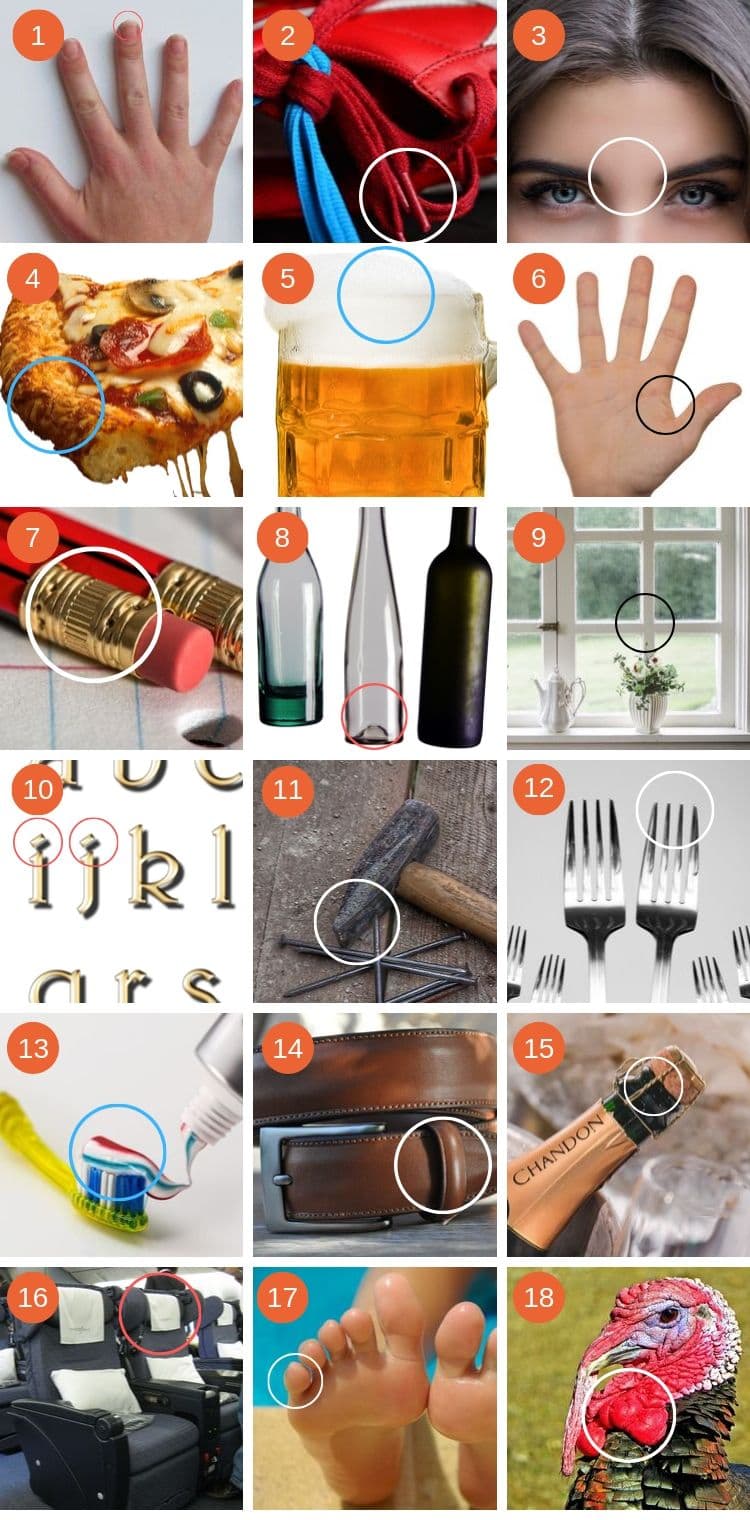
There really are some weird names for things in English.
Take, for instance, the day before yesterday. Most of us would probably use phrases like the day before the day before, or two days ago.
But believe it or not, there’s a perfectly good word for it: ereyesterday. Who would know that?
However, if you are interested in uncommon English words, here’s a chance to check your vocabulary knowledge.
A fun vocabulary test for writers
You are using your extensive vocabulary of English words all day and every day.
But there might be a few gaps in your English language knowledge.
With over a million words, our language is extremely rich.
But who can remember all of the strange words in the English language?
There is a word for every movement, emotion, or thing you can possibly imagine.
Many new technical words come from our use of online technology.
We also use a lot of use foreign words as well.
Then there are newly invented words we use in everyday conversation, like tic tacs, big data, noobs, unfriend, and selfies.
Do you believe you have a fantastic knowledge of vocabulary?
Well, here’s a fun, weird name for common things test to challenge you.
Find the right word for 18 everyday objects
Take a look at the images below.
There are 18 things we see almost every day. But they could be objects that you didn’t know had names.
There is nothing strange or unusual here.
These are some of the most common things we use and look at every day without giving them even a second thought.
But if you needed to write about any of these objects, what word would you use?
Each image has a circle around the object. You need to find the correct word for the object in each one.
Are you up to this challenging but fun, weird names for things vocabulary test to find the odd words for these common things?
Well, let’s get started and see if you can find the correct answer for each image.
Weird names for things – can you solve the puzzle?

How did you get on with this English word vocabulary test?
Maybe you are a little mystified by one or two or even a few more.
Well, relax, and don’t panic too much.
Very few people know all of these rare words. But if you are curious, the answers are towards the end of this article.
What do we use when we don’t know a word?
Sometimes, describing is the best way to let your readers know what you are talking about.
If you have an extended vocabulary, words you use that are relatively uncommon might confuse a reader. Or you will have them hunting for a dictionary.
It’s always a choice to make between complex and simple words or using a description for clarity.
For the 18 items in the images, readers may not understand the unusual words for these things.
You would probably use phrases similar to the following to describe the objects to your readers.
It’s better to describe
1. The white, crescent-shaped end part of the fingernail.
2. The metal or plastic piece on the end of shoelaces.
3. The area between your eyebrows.
4. The crusty outer part of a pizza.
5. The white foam on the top of a glass of beer.
6. The part of your hand between your thumb and index finger.
7. The metal piece that is at the end of a pencil with an eraser.
8. The indentation in the bottom of a wine bottle.
9. The frames within a window.
10. The dots above the letters i and j.
11. The end of a hammer that doesn’t strike nails.
12. The sharp prongs of a fork.
13. A dollop of toothpaste on a toothbrush.
14. The loop on a belt to hold the end in place after passing through the buckle.
15. The wire cage that holds a champagne cork in place.
16. A piece of cloth that protects the headrest of a seat or sofa from dirt or soiling.
17. The little toe on your foot.
18. The red fleshy part attached near the base of a turkey’s beak.
It’s your choice when it comes to unusual vocabulary. Do you describe an object or thing, or do you use a single uncommon word?
The selection is yours to make as a writer.
Feelings, sensations, and very peculiar words
There are many uncommon words that you could consider using as a writer.
Let’s try some of these strange words for everyday emotions, senses, and feelings on for size.
Petrichor
Vagitus
Phosphenes
Dysania
Collywobbles
Paresthesia
Crapulence
Scurryfunge
Aphthongs
Tmesis
What do these ten weird names for things mean?
I can hear you running off to your dictionary right now. Well, perhaps hear your clicks on your keyboard as you use Google Search to find the answers.
Don’t you just love English vocabulary? They could be very cool words to use in your writing.
Here are the answers
It’s okay; you can take it easy now. Here are the definitions to save you from hunting for them.
Petrichor: The way the air smells after it rains.
Vagitus: The particular cry of a newborn baby.
Phosphenes: The strange lights and flashing you see when you close your eyes.
Dysania: When you find it hard to get out of bed in the morning.
Collywobbles: The feeling of butterflies in your stomach.
Paresthesia: A pins and needles or numb feeling, particularly in your fingers or limbs.
Crapulence: A sick feeling you get when you eat or drink to excess.
Scurryfunge: The time you spend running around frantically cleaning before guests arrive.
Aphthongs: Silent letters you don’t pronounce, like K and H.
Tmesis: When you separate a word into two parts for effect and then add an extra syllable in between. For example, I am going to abso-freaking-lutely solve this vocabulary puzzle.
The solution to the weird everyday objects picture puzzle
How well did you do trying to find these weird names for things? Did you find the right word for all of the 18 objects in the images above?
I’m sure you know many of these words. But for the ones that remain a mystery, here are the correct answers.
1. Lunule (The lunula is the white crescent at the base of your fingernail.)
2. Aglet
3. Glabella
4. Cornicione
5. Barm
6. Purlicue
7. Ferrule
8. Punt
9. Muntin
10. Tittle
11. Peen
12. Tines
13. Nurdle
14. Keeper
15. Agraffe (It can also be called a cage or muselet.)
16. Antimacassar
17. Minmus (By the way, your big toe is called the hallux.)
18. Snood
Conclusion
Words are your currency as a writer. You should always be trying to add more variety to your usable vocabulary.
It’s not how many words you know, though, but how you use them in your writing.
Communicating with your readers is not always easy. You have to find the best ways to bring a clear vision to their minds.
You can use one word, or you can write a description. The choice is always up to you.
But it never hurts at all to enrich and build your vocabulary knowledge.
Related reading: Can You Find All 27 Figure Of Speech Examples In This Picture Puzzle?




Awesome